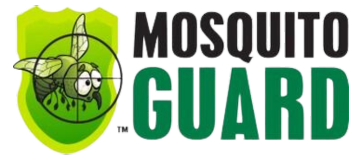Here are some interesting mosquito facts that might just surprise you:
- Mosquitoes cause more human suffering than any other organism — over one million people die from mosquito-borne diseases every year.
- All mosquitoes must have water in which to complete their life cycle.
- The male mosquito feeds on plant juices and is important only for mating. Only the female bites to obtain a blood meal. Female mosquitoes imbibe blood so that their eggs can mature prior to laying. Unfortunately, humans are among her favorite and easiest targets. In order to obtain energy, both male and female mosquitoes feed upon plant nectars – much in the same manner as honeybees.
- A mosquito develops from egg to adulthood within 7 days.
- Mosquitoes can fly at about 1 to 1.5 miles per hour.
- Mosquito species preferring to breed around the house, like the Asian Tiger Mosquito, have limited flight ranges of about 300 feet. Most species have flight ranges of 1-3 miles.
- Smaller species found around houses commonly weigh about 2.5 milligrams.
- When feeding to repletion, mosquitoes imbibe anywhere from 0.001 to 0.01 milliliter.
- Most adult female mosquitoes live 2-3 weeks. Some species that over-winter in garages, culverts and attics can live as long as 6 months.
- In general, mosquitoes that bite humans prefer to fly at heights of less than 25 ft. Asian Tiger Mosquitoes have been found breeding in tree holes over 40 feet above ground. In Singapore, they have been found in apartments 21 stories above ground. Mosquitoes have been found breeding up to 8,000 feet in the Himalayas and 2,000 feet underground in mines in India.
- Mosquitoes are more likely to choose a victim wearing darker colors.
Mosquitoes and the Diseases They Can Carry
(Information provided by the U.S. Environmental Protection Agency)
Almost everyone has had the unpleasant experience of being bitten by a mosquito. Mosquito bites can cause severe skin irritation through an allergic reaction to the mosquito’s saliva – this is what causes the red bump and itching. But a more serious consequence of some mosquito bites may be transmission of certain serious diseases such as malaria, dengue fever and several forms of encephalitis, including West Nile virus. Not only can mosquitoes carry diseases which afflict humans, but they also can transmit several diseases and parasites that dogs and horses are very susceptible to. These include dog heart worms and eastern equine encephalitis and West Nile Virus.
There are about 200 different species of mosquitoes in the United States, all of which live in specific habitats, exhibit unique behaviors and bite different types of animals. Despite these differences, all mosquitoes share some common traits, such as a four-stage life cycle. After the female mosquito obtains a blood meal (male mosquitoes do not bite), she lays her eggs directly on the surface of stagnant water, in a depression, or on the edge of a container where rainwater may collect and flood the eggs. The eggs hatch and a mosquito larva or “wriggler” emerges. The larva lives in the water, feeds and develops into the third stage of the life cycle called a pupa or “tumbler”. The pupa also lives in the water, but no longer feeds. Finally, the mosquito emerges from the pupal case and the water as a fully developed adult, ready to bite.
The type of standing water in which the mosquito chooses to lay her eggs depends upon the species. The presence of beneficial predators such as fish and dragonfly nymphs in permanent ponds, lakes and streams usually keep these bodies of water relatively free of mosquito larvae. However, portions of marshes, swamps, clogged ditches and temporary pools and puddles are all prolific mosquito breeding sites. Other sites in which some species lay their eggs include tree holes and containers such as old tires, buckets, toys, potted plant trays and saucers and plastic covers or tarpaulins. Some of the most annoying and potentially dangerous mosquito species, such as the Asian tiger mosquito, come from these sites.
Mosquito Life Cycle
The mosquito goes through four distinct stages during its life cycle:
- Egg – hatches when exposed to water;
- Larva – (plural. – larvae) “wriggler” lives in the water; molts several times; most species surface to breathe air;
- Pupa – (plural – pupae) “tumbler” does not feed; stage just prior to emerging as adult;
- Adult – flies short time after emerging and after its body parts have hardened.

